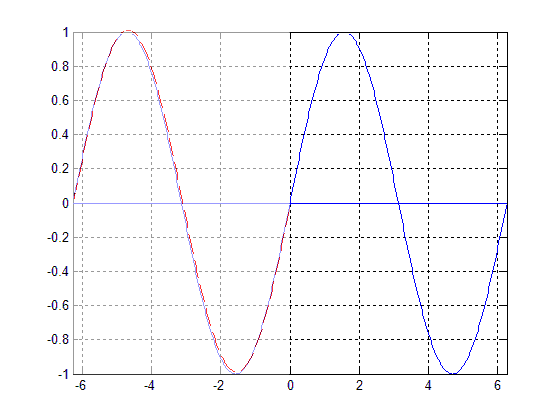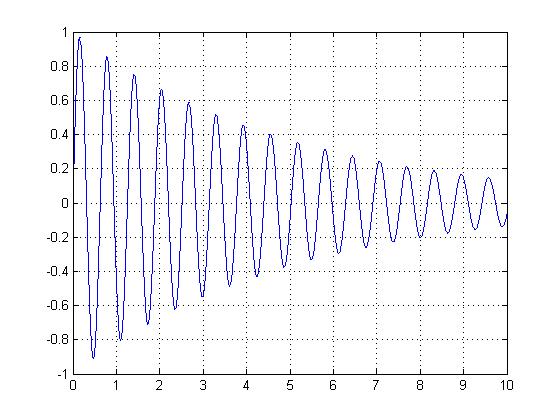Periodic Functions
The function $ f(t)=sin(t+T) $ is periodic, with a period of $ T=2\pi $. This means that for $ T=2n\pi $, n an integer, the function will be unchanged from when $ T=0 $.
Non-periodic Functions
A non-periodic function does not remain self-similar for all integer multiples of its period. A decaying exponential is an example of a non-periodic function. The distance between consecutive peaks does not remain constant for all values of $ x $. Presented here is the function $ f(t)=e^{0.2t}*sin(10t) $.



